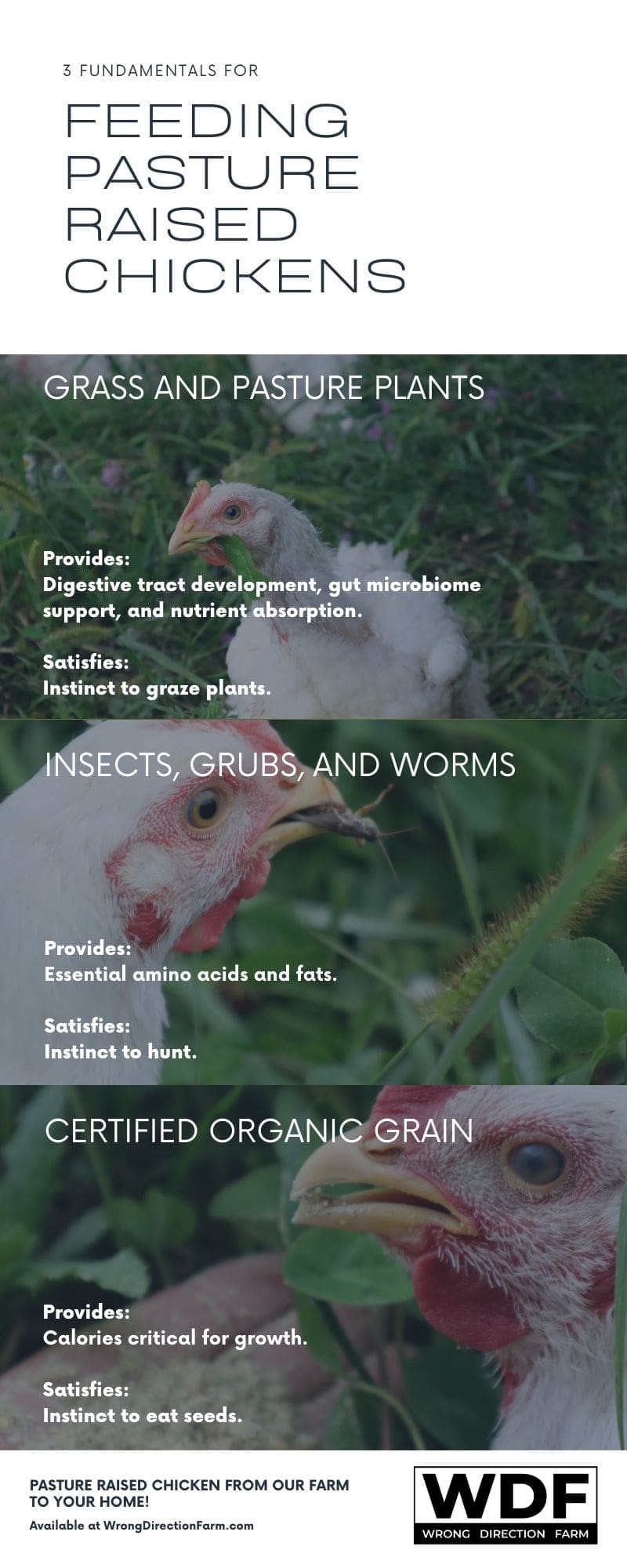I was intrigued to read this morning a new article from ProPublica on the chicken industry. The piece covers two somewhat divergent topics. One topic relates to the sourcing of chicken, the other relates to bacterial contamination rates in certain product lines. We could explore either topic, but the chicken sourcing item is of more interest to me. The presence of bacteria in these chickens probably isn’t new news, but the confusing web of sourcing is a topic that might surprise readers.
The ProPublica research found that poultry products are all being processed by the same group of industrial chicken slaughterhouses and packaging facilities. For instance, one Perdue factory in Delaware is producing chicken under different labels for Trader Joe’s, Walmart, Whole Foods, Kroger, and ButcherBox. The same few corporations and the same few mega-scale slaughter and meatpacking facilities are processing almost all our chicken and turkey.
Despite the appearance that we have a variety of choices and brands, it’s all an fabrication. The food industry is steadily shrinking under the gravitational pull of consolidation. Independent-sounding labels persist long after the smaller companies have been gobbled up by that conglomerates, like Pasturebird now being part of Perdue or Grass Run Farms being part of the world’s largest meatpacker JBS. There is very little choice left, and these choices constrain us to choose among the largest industrial players.
Nationwide Distribution, Nationwide Obfuscation
We could imagine a naïve customer entering a Trader Joe’s or Whole Foods, or buying online at ButcherBox, thinking that it would be good to buy a premium chicken because they don’t trust the low-brow grocery store brands from Walmart or Kroger, not knowing that they’re all sourced from the same place under a different label.
But are we as consumers really that gullible? Don’t we know at some level that anything at these stores must be sourced from the same national organizations? Shouldn’t we realize we’re still just buying from the same old, same old supply chain? How could they have their market reach and their ability to consistently supply millions of sale units every week without that kind of sourcing homogeneity behind it all?
Our system of commerce worships at the altar of scale. Nothing is fundable in our capital markets unless it is scalable. And nothing is scalable unless it is commoditized and interchangeable. Once something is interchangeable, then the same factory can produce the same widget for Trader Joe’s, Walmart, Whole Foods, Kroger, and ButcherBox. The consumer can’t tell the difference, because there is no difference. The only perceived difference is in the marketing hype and the design of the label.
Whenever we purchase a product from a grocery, food delivery service, or restaurant, especially one not directly connected with its suppliers, we have to assume that there is an entire opaque supply chain behind it all. The opacity isn’t just a consequence of the complexity. It is also a design choice. We aren’t meant to see behind the curtain. They’d rather we didn’t trouble ourselves about it.
We could blame the corporations for creating the charade of variety. Or we could blame ourselves for choosing ignorance when we should have known it would play out this way. Probably the blame spreads both ways.
Really Real Transparency
At Wrong Direction Farm, we’re here because we want to take a path leading in a different direction. We aren’t chasing scale and growth, rather we’re focused on actually making a difference with our farming. Instead of hiding the facts, we want to be clear about our farming. I hope the archive of all the many years of candid blogging helps demonstrate our willingness to be real with our customers.
In the spirit of unvarnished truth-telling, here are four things you should know about Wrong Direction Farm’s chicken and turkey:
- Our chickens and turkeys are raised here on our farm. We aren’t re-labeling chickens from another source.
- Our poultry are Certified Organic and raised on grass pastures. We are absolutely committed to both Organic and Pasture-Raised standards. And we never use misleading terms like Free Range.
- Our birds are slaughtered and packed at a small shop just 10 minutes from the farm, run by two full time guys and a couple of part time helpers. They really embody the same small-scale ethos that we have in our approach to farming.
- I will always answer questions about our products. Today someone called to ask about packaging. Yesterday someone called to ask about organic feed. Feel free to talk to us, you won’t get a marketing agent answering the phone, you’ll actually speak with the farmer.

8 thoughts on “When Your Fancy Free Range Chicken Comes from the Same Place as Walmart’s Chicken”
What exactly are your chickens feed?
Hi Sandra, I’ve written lots about this topic following blog posts about the roles of green plants, insects, and organic grain in our poultry feeding.

And then this infographic sums things up:
Thanks,
Dave
Yes, I probably should’ve figured this out. I appreciate the info and will definitely adjust our purchasing accordingly.
Thanks Marjorie! They do their best to obscure things, and all these companies pay top dollar for marketing, so it isn’t surprising that they are so effective at their work.
Thanks for that info. I have had a butcher box subscription and I also shop at Trader Joe’s.
It does get confusing figuring out what’s actually behind the labels.
This is not surprising. I do buy chicken from a smaller producer and the taste is very different from that of supermarket birds.
I’m sure you can taste the difference.